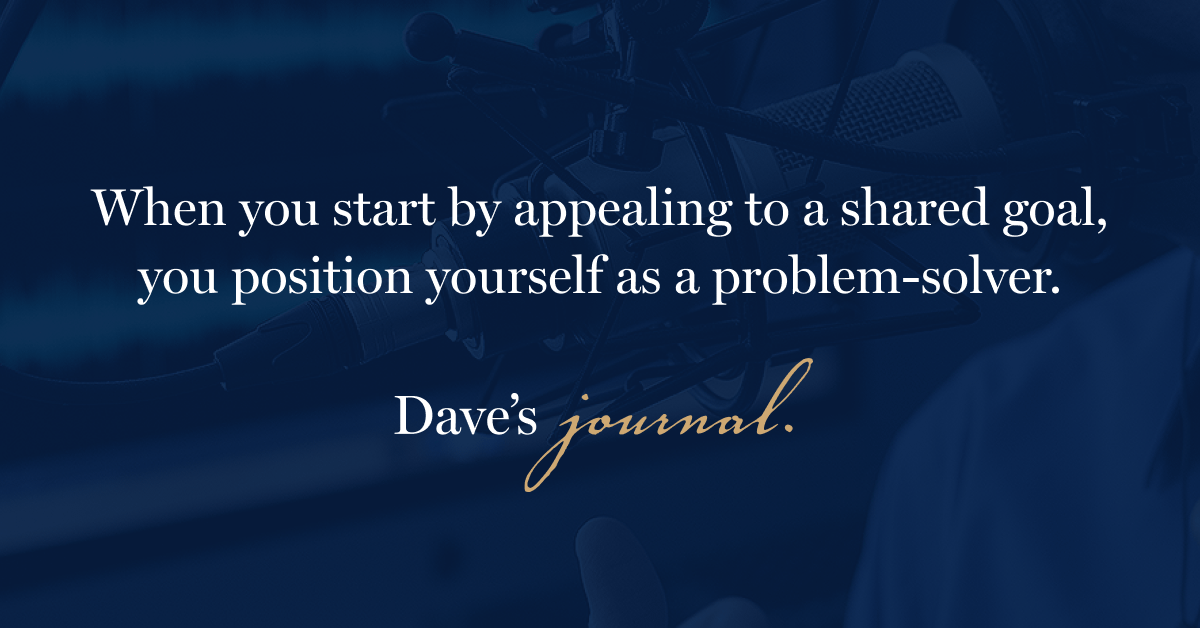For years, I’ve heard countless people give this well-intended advice on structuring a briefing or presentation:
Tell 'em what you're going to tell them. Tell 'em. Tell 'em what you've told them.
I bet you’ve heard that too. It might be advice for someone who’s giving a presentation for the first time. That’s because it’s a simple outline that most people can follow successfully.
But most professionals should move beyond this fairly quickly. That’s because, it’s awfully boring to listen to someone follow this framework.
Think of an individual in your professional network who engages you when they present. I bet they don’t typically start their presentations with a table of contents.
You can do a lot better, especially in high-visibility situations. Here are three ways to start that will engage people right away:
1. Tell a Story
People find stories compelling and want to know how those stories resolve. It's the reason books like Dale Carnegie's How to Win Friends and Influence People* became popular. The concepts were not new, but they were presented through a set of powerful stories that most anybody could relate to.
Tell a quick story that relates to the overall message of your presentation. Just say what happened and how the lesson, conclusion, or action leads into your message. Keep it to just a minute or two and then transition to your main points.
Also, resist any urge to use a dramatic voice from your high school acting class. Just tell the story like you would to a friend you ran into outside of work. Virtually all of us already do lots of storytelling in our everyday lives.
2. Congratulate Your Audience
Get the audience's attention by congratulating an individual or the audience as a whole on a recent accomplishment. Cite a specific incident or situation you know they are proud of. For example, I recently began a presentation by congratulating the team of a larger organization on an impressive rise in their stock price.
There are two benefits to starting this way:
First, you get the audience's attention, since you just made them the star of the show. After all, if you have earned the right to present, you are there to serve them (not the other way around).
Second, you increase credibility since people recognize that you've taken time to do your homework. A lot of speakers think only about their message during preparation, so this sets you apart almost immediately.
3. Appeal to a Shared Goal
Start where you can find common ground. While useful in many presentations, it's especially valuable as a starting point when you might not be on the same page as your audience.
If you're responding to a frustrated customer, appeal first to what everyone can agree to. Speak to the fact that while there may be disagreements on the solution, everyone in the room wants the problem resolved and the project to succeed.
When you start by appealing to a shared goal, you position yourself as a problem-solver. The audience still may not agree with what you suggest, but is far more likely to give consideration to what you have to say.
If you’ll begin your next presentation by appealing to people’s humanity, you’ll earn their attention — and then the opportunity to do a lot more.
Dave's Journal is available by audio on Apple Podcasts, Google Podcasts, Overcast, and Stitcher.





